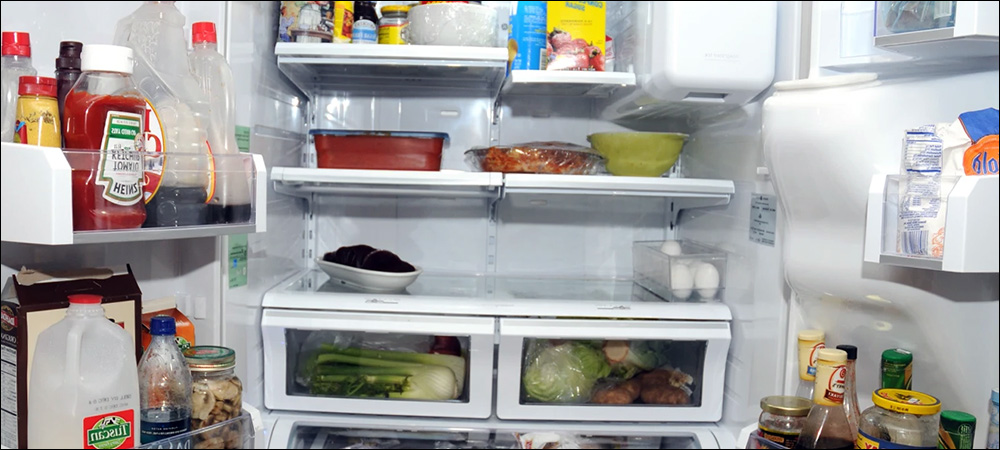- Tracking the Contents of Your Refrigerator
- POC Participants Viewed Fridge Data While Shopping
- Imagining a World Leveraging BLE, UHF and NFC
Jun 13, 2022SATO, a manufacturer of thermal printers and RFID labeling technologies, has completed a proof-of-concept (POC) for a Bluetooth Low Energy (BLE) smart refrigerator solution that enables consumers to gain automated updates regarding the quantity and freshness of their perishable foods via their smartphones. The two-month pilot wrapped up in February 2022.
The pilot tested how well consumers could track what products were in their refrigerator, whether or not they were home, as well as how much was left in the containers and if the goods were likely to still be fresh. The solution, part of a project funded by Japan's Ministry of Economy Trade and Industry (METI), included a group of shoppers who agreed to be pilot participants, as well as general merchandise store Ito-Yokado. Wiliot provided the passive BLE sensor technology for the pilot (see Wiliot Builds Partnership Program for Passive BLE Sensors).

The pilot tested how well consumers could track what products were in their refrigerator, whether or not they were home, as well as how much was left in the containers and if the goods were likely to still be fresh.
The companies involved in the proof-of-concept are currently evaluating the results, but in general, SATO sees a strong future not only for BLE technology, but also RFID and Near Field Communication (NFC), depending on the application, says Motoaki Hirata, SATO's manager of RFID international business development. The company's RFID-based technology sales alone, he reports, have increased by 45 percent above those from the previous year.
SATO has a history of working with emerging technologies, and it has been developing solutions aimed at leveraging wireless communications (see Swiss Hospital Deploys RFID-Enabled Print-on-Demand Patient Bracelets). The company recently completed a pilot of a retail application using Wiliot tags to capture the status of every product on display in stores, and to manage data regarding how products are received, based on BLE data.
With a Wiliot passive BLE tag on every product within a store, as well as on display shelves, retailers could capture data such as a product's movement and temperature, along with how long it has remained on display. Store management could use smartphones or dedicated BLE beacons to capture data from BLE tags and view product conditions, and to receive alerts—for example, if temperatures were to rise above a specified threshold.
The tag uses the energy from the beacon transmissions to power its sensing and response, requiring no batteries or other power sources, and thereby making it potentially affordable for the BLE sensors to be attached to products. This year, SATO has taken the technology further, into consumers' homes and refrigerators. The solution is now in the proof-of-concept phase, and the company plans to commercialize the solution based on the POC's successful results within the following year, says Kazuya Hirata, SATO's consumer business-development manager.
Tracking the Contents of Your Refrigerator

Motoaki Hirata
In 2018, SATO began its partnership with Wiliot. Early on, the company envisioned a variety of use cases by which consumers could gain information about the status of products after purchase, whether or not they were at home. One use case involved looking at the content of refrigerators. "The idea," Kazuya Hirata explains, "was that when a customer purchases goods and takes them home, they wouldn't want to keep track of those products," including when they may need replacement. For instance, a container of yogurt pushed to the back of a refrigerator might end up overlooked and reach its expiration date, or it could be replaced long before it was empty, due to the consumer not having time to check the contents before going to the store.
SATO teamed up with Ito-Yokado to conduct the proof-of-concept testing of BLE technology on some of its grocery products. The customers participating in the POC purchased items from the store and took them home, having previously received Wiliot's BLE tags from SATO. They peeled the adhesive tags and stuck them to the products, using their smartphone and an application to capture the tag ID numbers and associate each with a specific item. Each BLE label's unique ID was stored in dedicated cloud-based software hosted on SATO's server.
Participants received Wiliot tags that could be applied to food items. Each tag provided temperature-sensing functionality that was energized by radio waves emitted by a gateway. For weight measurement, cloud-connected scales were provided. The weight data was associated with the product ID and temperature information transmitted by the Wiliot tags. Thus, a container of yogurt, for instance, could transmit not only when it was purchased, but also its temperature and the volume of the product remaining in the container.
POC Participants Viewed Fridge Data While Shopping

Kazuya Hirata
Each time consumers opened the app on their phone and brought it within range of their refrigerator, they updated the latest data about what products were in cold storage, along with their freshness and quantity. When they next went shopping, they could consult the app to guide their purchasing. "When you go shopping," Kazuya Hirata states, "there may be a moment when you cannot remember what it was, exactly, that you need." With the app, users can view the latest details related to the refrigerator contents, thus ensuring they buy products that require replacement.
The proof-of-concept was completed at the end of February, and SATO is now evaluating the results. However, Kazuya Hirata says, the early response indicates the technology worked well and provided value for shoppers and the store. "If the results are good," he says, "we ultimately want to commercialize a solution." There are multiple steps that would need to be accomplished first, though. For one thing, he notes, the system could not rely on consumers peeling and sticking the tags in their homes. "That won't work in a real-world environment, so we are working with all the stakeholders who participated in this project," to determine how and when tags could be applied to products.
Most likely, Kazuya Hirata says, "We see that tags may be attached to products in the supermarket," or built into packaging by retailers, though that may not take place in the near-future. "That's what we are aiming for and what we are working toward," he says of brands tagging their own products. "We would like the brand owners of all kinds to attach tags to items, but of course it's not an easy thing to achieve, and we have to have the right unit price for tags—and we have to think about the infrastructure."
Imagining a World Leveraging BLE, UHF and NFC
As BLE sensor tags become more affordable, the company sees long-term value for brands and retailers in tracking goods with the technology, either in conjunction with or instead of UHF RFID. Most smartphones can receive Bluetooth Low Energy signals, Kazuya Hirata points out, reducing the need for a network of fixed readers. "As a company," he states, "we see value in both existing technology and innovative technology that will serve our customers' needs."
In the case of BLE technology, the company sees an opportunity to serve the business-to-consumer market while enabling consumers to interact with the tag using the mobile phones. "So BLE is in addition to the UHF and NFC offerings," Motoaki Hirata reports. "These will be a compliment rather than replacing UHF and NFC technologies." He expects growth in the RFID market to continue its trajectory.
SATO continues to sell products and solutions focused on both UHF and NFC data to track goods that include not only general merchandise but also electronics and food. The firm has been producing UHF RFID tags with its own inlay design since 2017, and it has seen RFID growth driven by the need for supply chain efficiency, and by a desire on the part of businesses to reduce their carbon footprints.
SATO says it seeks to provide wireless technologies that will boost productivity in manufacturing, as well as decrease the amount of fuel and energy required to make and deliver products to consumers. "A lot of companies that have been using bar codes to track their products are now seriously contemplating using RFID to do the tracking," Motoaki Hirata says.
Key Takeaways:
- A proof-of-concept that was completed in February is now being evaluated to determine the effectiveness of a passive BLE solution in tracking the presence and conditions of food within refrigerators.
- Future deployments could leverage BLE—or a combination of BLE, UHF and NFC—to help brands, retailers and consumers track goods from factory to consumption.

